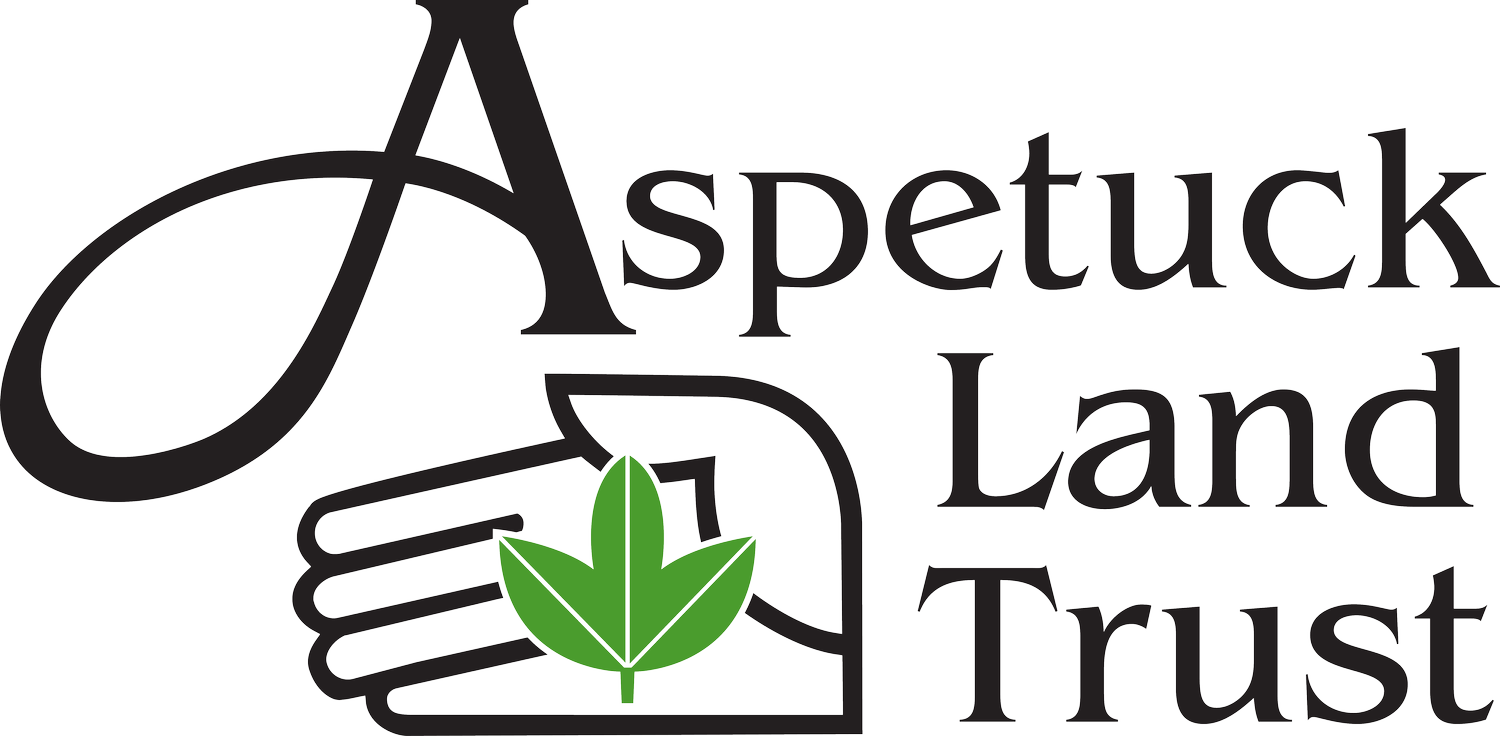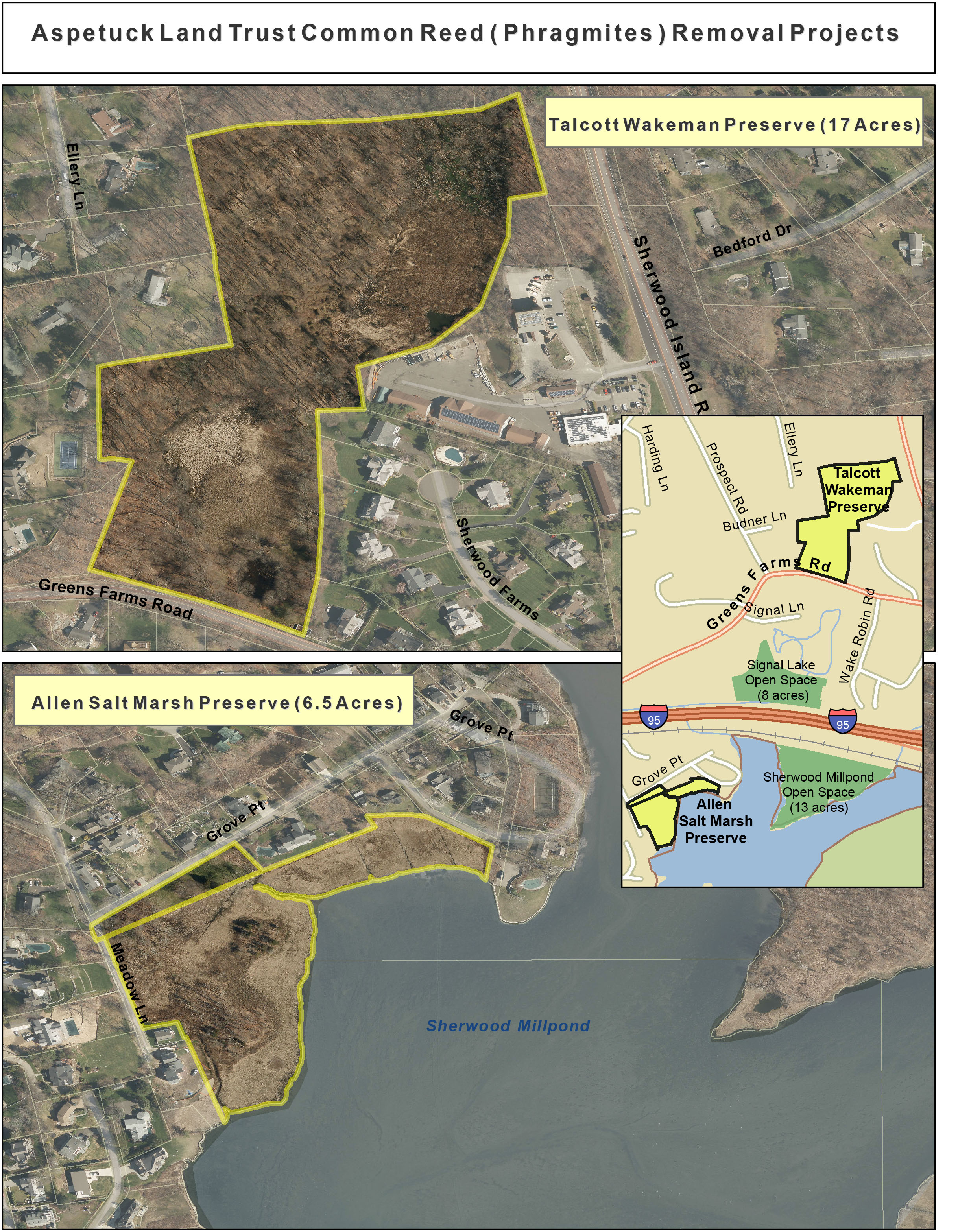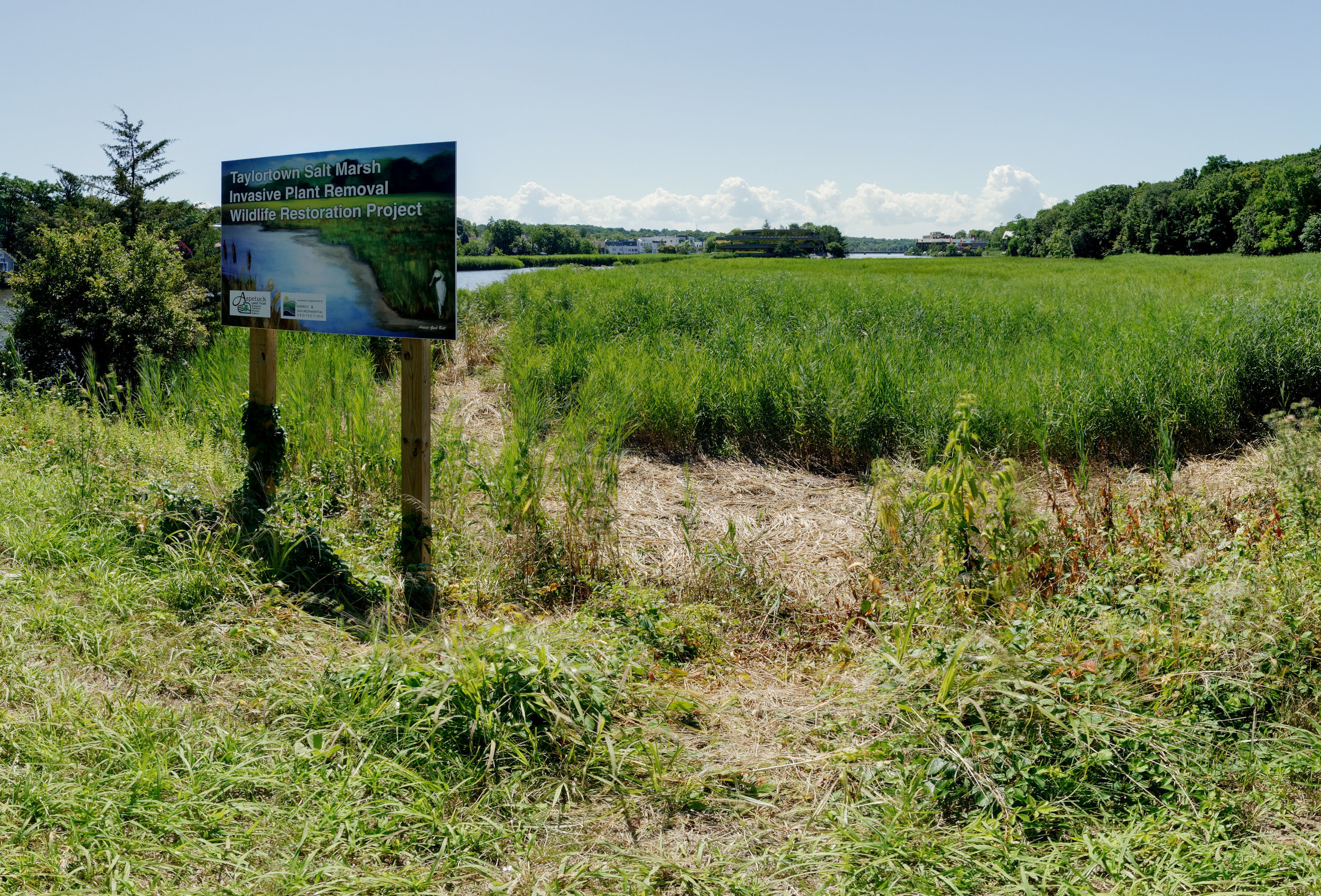Restoring Talcott Wakeman and
Allen Salt Marsh Preserves in Westport
In 2018, we began efforts to restore the Talcott Wakeman and Allen Salt marshes in Westport by removing the highly invasive Phragmites weed. We have been successful in restoring other marsh areas by removing phragmites, most recently the Taylortown Salt Marsh in the Saugatuck estuary in downtown Westport. See below for more information and to donate towards this new effort.
Background on Phragmites:
While the familiar, tall, grassy plant looks innocent enough, infestation in the Saugatuck River watershed of Phragmites australis, a federally recognized invasive plant species, has resulted over time in the loss of a biologically–rich tidal marsh. The dense growth of the tall reeds blocks sunlight from reaching marsh soil preventing germination of seeds of important native plants. It also produces a chemical in its roots that stops native plants from growing. Overtaken by Phragmites, marshes and estuaries are deprived of a healthy mix of cattails, grasses, sedges and other plants. As a result it is an unsuitable habitat for many native marsh birds and other animals. After a three year treatment period of treatment we see an increase in egrets, snipe, rails, woodcock, muskrats, river otter, owls and many other species. The below infographic shows the results.
What’s involved:
The 3-year process to remove Phragmites starts with mowing of the marsh area by a state-licensed contractor in the winter. In summer, a CT DEEP approved invasive plant control agent is applied by a licensed applicator. This process is repeated annually for two more years. The young Phragmites plants absorb the federally approved and registered herbicide (shown to be nontoxic to humans and wildlife) down to their extensive root system. After the plant dies it is cut again and mulched during the winter and early spring with special machinery. This process opens the marsh surface to light so that the seeds of native plants stored in the soil can return and the marsh community can thrive. The CT DEEP approved process has worked successfully in many areas including the Taylortown Salt Marsh in Westport. The CT DEEP program has also been successfully used to end Phragmites infestation in Connecticut Audubon Society properties in Ashford and Sharon among many other places. This method has been used effectively by Oyster fisherman in Willapa Bay in Washington state to control invasive, non-native spartina in their oyster beds.
COMPLETED: Taylortown Salt Marsh Restoration, Westport
Project Goals:
To restore native plant species and enhance wildlife habitat and diversity in the 3.2 acre Taylortown Salt Marsh preserve by removing Phragmites australis, a fast growing, non-native wetland reed.




